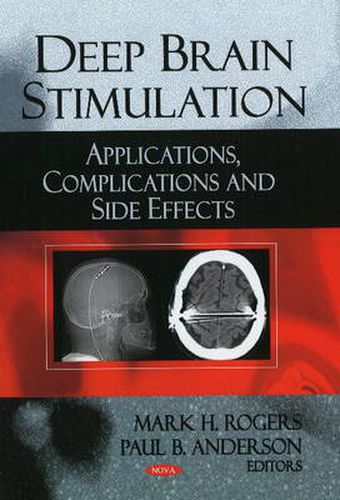Readings Newsletter
Become a Readings Member to make your shopping experience even easier.
Sign in or sign up for free!
You’re not far away from qualifying for FREE standard shipping within Australia
You’ve qualified for FREE standard shipping within Australia
The cart is loading…






In neurotechnology, deep brain stimulation (DBS) refers to a surgical treatment involving the implantation of a medical device called a brain pacemaker, which sends electrical impulses to specific parts of the brain. DBS in select brain regions has provided remarkable therapeutic benefits for otherwise treatment-resistant movement and affective disorders such as chronic pain, Parkinson’s disease, tremor and dystonia. Despite the long history of DBS, its underlying principles and mechanisms are still not clear. While DBS has proven helpful for some patients, there is potential for serious complications and side effects. This book presents current research on this cutting edge treatment. Success of functional stereotactic procedures is shown to depend on a variety of factors, including patient selection, methodology of choice and localisation of the target, and the experience of the neurosurgery team. Complications on the use of the procedure in the treatment of Parkinson’s Disease are also presented. The use of Vagus nerve stimulation on treatment-resistant patients with major depression is discussed as well.
$9.00 standard shipping within Australia
FREE standard shipping within Australia for orders over $100.00
Express & International shipping calculated at checkout
In neurotechnology, deep brain stimulation (DBS) refers to a surgical treatment involving the implantation of a medical device called a brain pacemaker, which sends electrical impulses to specific parts of the brain. DBS in select brain regions has provided remarkable therapeutic benefits for otherwise treatment-resistant movement and affective disorders such as chronic pain, Parkinson’s disease, tremor and dystonia. Despite the long history of DBS, its underlying principles and mechanisms are still not clear. While DBS has proven helpful for some patients, there is potential for serious complications and side effects. This book presents current research on this cutting edge treatment. Success of functional stereotactic procedures is shown to depend on a variety of factors, including patient selection, methodology of choice and localisation of the target, and the experience of the neurosurgery team. Complications on the use of the procedure in the treatment of Parkinson’s Disease are also presented. The use of Vagus nerve stimulation on treatment-resistant patients with major depression is discussed as well.